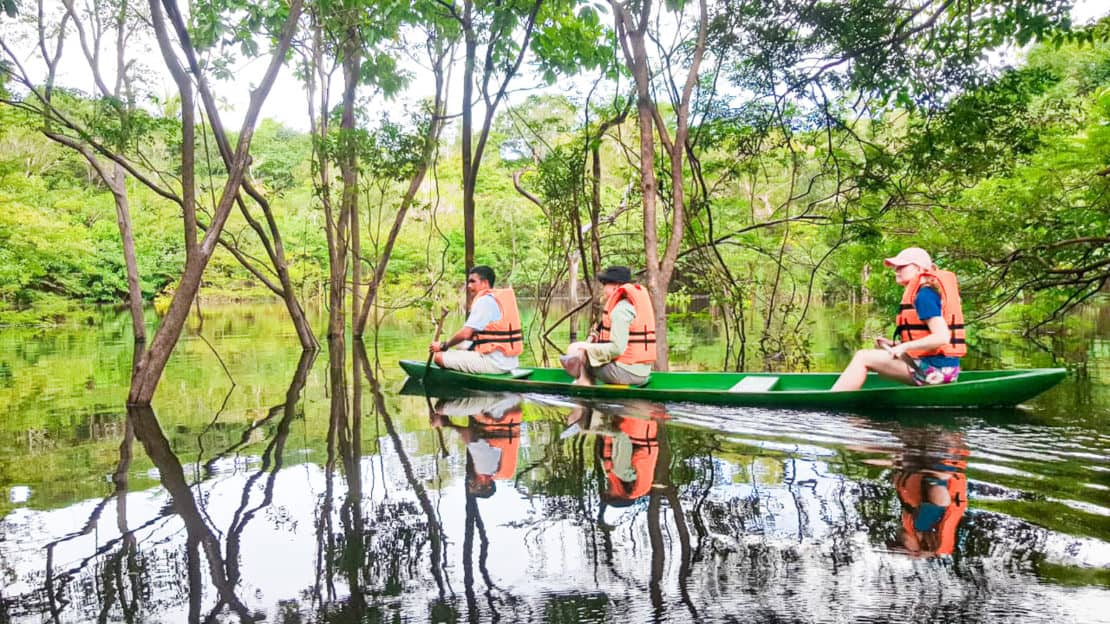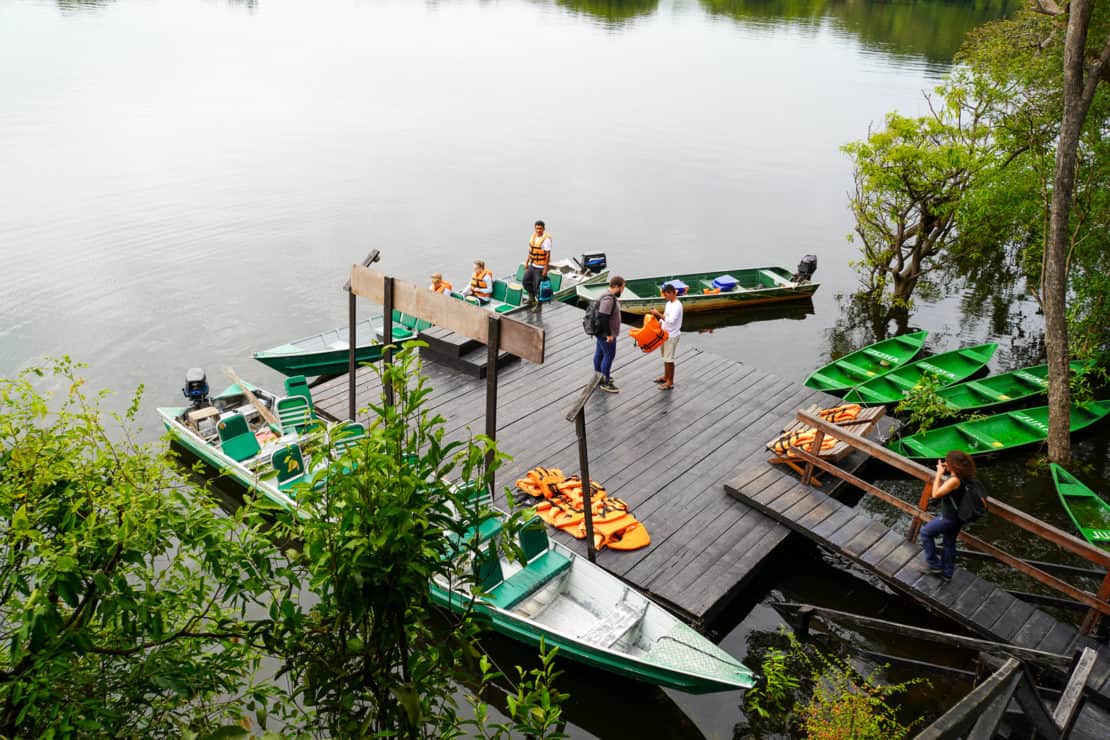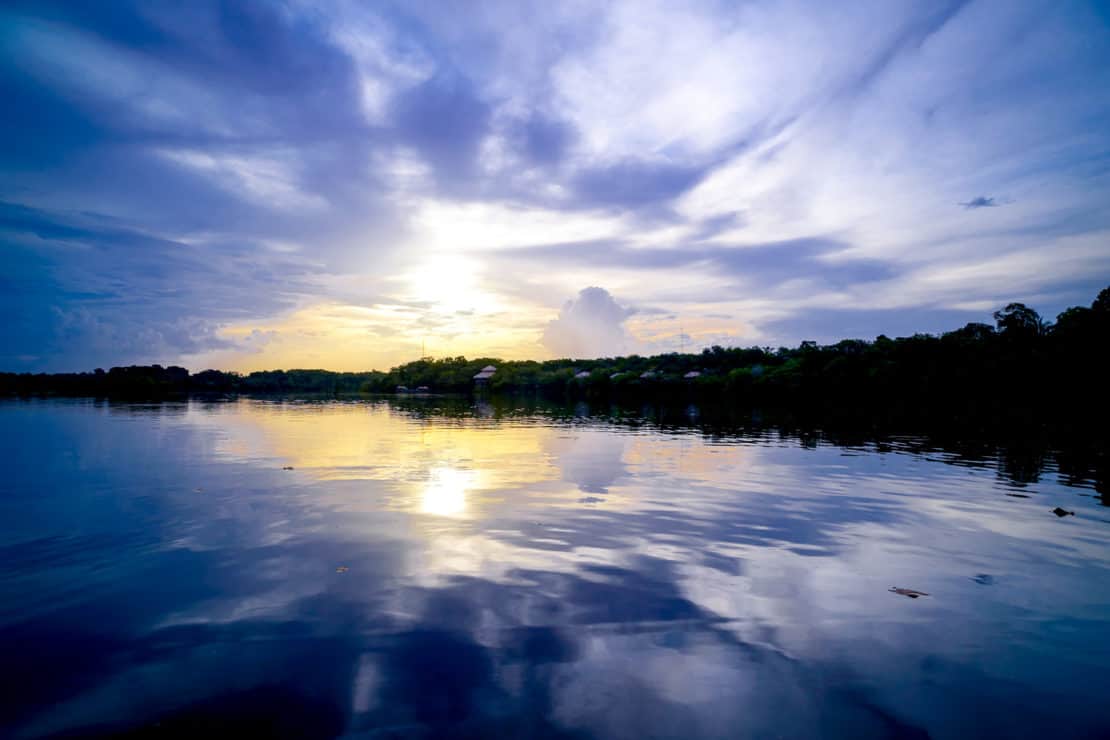Make the most of your journey into the jungle with these Amazon travel tips.
Embarking on a journey along the Amazon River is not just an adventure – it’s a deep dive into one of the most biodiverse ecosystems on Earth. Home to over 3 million species of plants and animals, and stretching across 4,345 miles, the Amazon River and its surrounding rainforest offer a kaleidoscope of wildlife, breathtaking landscapes, and a sense of wonder that’s hard to match. From the pink river dolphins to the elusive jaguar, every turn in this vast green world reveals something unexpected.
But while the Amazon’s mysteries and beauty captivate explorers, careful preparation is crucial to truly enjoy and stay safe on this unforgettable voyage. The unique climate, terrain, and wildlife pose both awe-inspiring sights and practical challenges. Whether you’re floating through the flooded forests, spotting caiman on the riverbanks, or marvelling at the towering kapok trees, a well-thought-out plan makes all the difference between a rewarding experience and an overwhelming one.
Here are the Amazon travel tips that can help.
The Amazon Travel Tips You Need to Know
Vaccinations and Health Precautions
Your number one priority is to take the necessary health measures before starting a luxury Amazon river cruise.
Visit a travel healthcare specialist as soon as you can, ideally at least three months before your trip as some immunisations take months to become effective. The NHS travel vaccination advice page is a good place to start. Recommended vaccinations often include:
- Typhoid
- Hepatitis A
- Yellow fever
Malaria can also be an issue and you should discuss whether or not malaria prophylaxis is right for you.
One thing that everyone needs to pay attention to is preventing mosquito bites in the first place. This calls for carrying insect repellent on hand at all times and using protective gear whenever possible. Wear protective clothing, always carry insect repellent and check out this guide on what to wear in the jungle.
Disclaimer: you must consult your own healthcare professional and this article provides an overview but cannot replace personal, professional healthcare advice.
Picking the Right Country and Route
The Amazon spans nine countries, with Peru, Brazil, and Colombia being popular choices due to their accessibility and tourism infrastructure. Each location offers a unique glimpse into the Amazon.
For example, Peru’s Amazon is home to the river’s source where the Ucayali and Marañón tributaries meet, offering smaller streams for closer wildlife encounters.
Brazil’s stretch of the Amazon showcases some of the densest, most biodiverse areas, while Colombia provides access to both water and land-based activities, adding depth to the exploration. Some travellers even prefer to begin their adventure in one country and end in another for a more varied experience. If you’re planning on travelling around after your Amazon adventure, don’t miss our guides to the cloud forests of Ecuador and the best markets in Quito.
Inside travel tip: you can’t see the whole Amazon at once. Choose one area to start with.
Packing Smart for the Rainforest
Because of the unexpected and difficult terrain, packing for an Amazon journey takes considerable consideration. Long sleeves and slacks or trousers provide insect protection, while lightweight, breathable clothing is crucial for controlling humidity.
The rainy season calls for the use of rain ponchos, durable waterproof boots, and shoes appropriate for mudslides. Besides wearing wearable mosquito netting for further protection, insect repellent is a must.. When the light does peek through the thick canopy, it’s also a good idea to wear a hat, sunglasses, and sunscreen.
You can read our full guide on what to wear in the Amazon here.

Wildlife Encounters and What to Expect
The Amazon is home to an incredible variety of creatures, including sloths, spider monkeys, pink river dolphins, and anacondas. It’s a haven for lovers of nature. Although the Amazon is teeming with life, it’s important to temper expectations because seeing bigger species like jaguars might be uncommon.
The majority of interactions will be with smaller species, such as insects, birds, and frogs. Travellers are certain to enjoy unforgettable wildlife adventures if they have the appropriate guide and a little perseverance. Never forget that the Amazon is not a zoo and that its animals are allowed to walk around in their environment. You can find more about the best things to do in the Amazon here.
Inside travel tip: pack binoculars to make the most of the wildlife you do see.

Choosing the Best Time to Visit
Timing is crucial for any Amazon adventure. The region experiences two main seasons: rainy and dry. The rainy season, from January to June, sees rising river levels, making it easier to explore deeper tributaries.
However, the dry season (July to December) brings lower water levels, which can limit access to certain areas but allow for more land exploration.
For a balanced experience, visiting in May or early June may provide the best of both worlds – high water levels for river exploration with more manageable rains.
Deciding How Long to Stay
The traveller’s objectives determine how long the trip will take. Many guests choose to stay at a resort for a week, followed by a few days on a riverboat. This gives you plenty of time to take in Amazon’s beauty without feeling hurried.
More daring travellers could decide to prolong their journey by adding camping or more trekking in the backcountry to their river sailing itinerary. The duration of stay should be considered while making plans because it will influence the sights and experiences that are had.
Navigating the Jungle With a Guide
The lush rainforest of the Amazon may be confusing even to seasoned travellers. It is thus strongly advised that you hire a local guide. A guide’s in-depth familiarity with the environment, local fauna, and customs may elevate an ordinary vacation to an amazing one.
Expert guides know native languages, identify species that are almost hard for the untrained eye to notice, and watch out for their guests’ safety – especially when they are travelling to far-flung locations. Although independent tourists might be enticed to explore, hiring a guide reduces hazards and ensures access to hidden gems.
Inside travel tip: go with a guide!

Staying Safe in the Amazon
Prioritising safety above all else is imperative in the Amazon. Remain near the guide at all times and refrain from going off on your own. It’s simple to become lost in the bush and may be rather unsettling.
When near bodies of water, use caution, as some may have dangerous parasites or flesh-ripping fish.
Also, always get your guide’s permission before swimming. Exploring the jungle requires cautious monitoring since many insects and amphibians may be poisonous.
Hydration is yet another important component. Dehydration may occur rapidly in hot and humid conditions; Therefore, it’s critical to always have a water bottle on hand. To prevent waterborne infections, it’s also a good idea to drink bottled water and replace your bottles on a regular basis to lower the chance of contamination.
Inside travel tip: bring your own reusable water bottle.

Amazon Travel Tips: At a Glance
1. Health Precautions: The Amazon Basin is home to both natural beauty and tropical diseases. Ensure your vaccinations are up to date, including yellow fever, and bring antimalarial medication if advised. A travel health consultation is a must before setting out.
2. Packing Smart: The rainforest’s humidity averages over 80%, and sudden downpours are the norm. Lightweight, moisture-wicking clothing, high-SPF sunscreen, and strong insect repellent are your best allies. Don’t forget waterproof bags to protect your electronics and gear.
3. Navigating the Waters Safely: The Amazon’s river systems are complex, with varying currents and hidden hazards. Travel with experienced local guides who know the intricacies of the river. Their knowledge of the flora, fauna, and local cultures enriches your experience, while ensuring your safety.
4. Wildlife Watching: With 10% of all known species on the planet calling the Amazon home, wildlife sightings are one of the main draws. To increase your chances of spotting unique creatures like the Amazonian manatee or the anaconda, plan excursions at dawn or dusk when many animals are most active.
5. Cultural Respect: The Amazon is not just a wilderness but a living, breathing community. The river is home to numerous Indigenous groups who have lived here for millennia. Engage with local guides to learn about their way of life and how they coexist with this extraordinary environment.
With its astonishing biodiversity, untamed beauty, and cultural richness, the Amazon promises an experience like no other. But it’s the right mix of excitement and preparation that transforms a journey down the river into a truly life-changing adventure.
